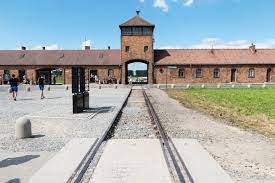The Auschwitz Museum is a museum located in the former Auschwitz and Birkenau concentration camps area, near the town of Oświęcim in Poland. The museum was established as a memorial and tribute to those who suffered and lost their lives in Nazi extermination camps during the Second World War.

The Auschwitz Museum consists of two main parts: Auschwitz I and Auschwitz II-Birkenau. Auschwitz I is the first concentration camp, established in 1940, and served as the administrative centre of the area. It contains several buildings, including prison wings, crematoria, memorials to the death marches, and exhibition rooms that present the history of the concentration camp and document Nazi atrocities.
Auschwitz II-Birkenau was a larger camp, built in 1941, which served as the main site of mass extermination. It contains large amounts of rubble and remains of gas chambers, cremation pits and other structures. Visitors to the Birkenau site can experience the scale of the massive extermination camp and get a sense of the horrors that took place there.
Both camps have museum buildings, exhibitions, documentaries, photographs and artefacts to help visitors understand the reality of the camps and remind them of the horrors of the Holocaust. Guided tours and educational material provide information on the history of the camps, conditions of imprisonment, genocide and survival.
The Auschwitz Museum is an important place to help preserve the memory of the victims of the Holocaust and to warn future generations of similar atrocities. The museum provides a space for learning, discussion and self-reflection, as well as a tribute to those who lost their lives and suffered in the concentration camps.